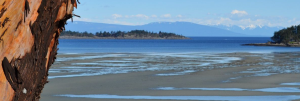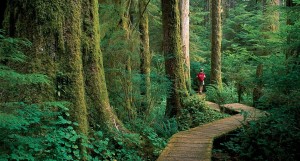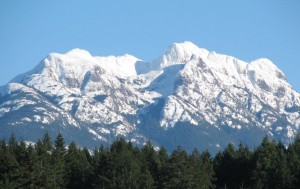 Climate and Weather
Climate and Weather
The Island’s climate is envied by the rest of Canada due to its mild winters and moderate summers.
Click here to read the complete article.In fact, Parksville Qualicum Beach has been called “Canada’s Riveria” by the Globe and Mail newspaper. Temperatures on the coast, even in January, are usually above 0 °C (32 °F). During the summer season, maximum temperatures average 21-24 °C (70-75 °F).
The rain shadow effect of local mountains (including Mount Arrowsmith, southwest of Parksville and Qualicum Beach), as well as the mountains of Washington’s Olympic Peninsula, creates wide variation in precipitation.
The rain shadow effect means the west coast of the Island is much wetter than the east coast. The average yearly precipitation ranges from 6,650 millimetres (260 in) at Henderson Lake on the west coast (the wettest place in North America) to only 635 millimetres (25 in) at the Saanich Peninsula in Greater Victoria. Rainfall is heaviest in the autumn and winter and snow is rare at low altitudes.
A weather feature to note is the Mediterranean-like dryness that residents and visitors alike enjoy in latitudes as high as 50°N. This is part of the reason why Parksville Qualicum Beach is known as “Canada’s Riviera”. Only in the extreme northern part of the Island near Port Hardy is the driest summer month’s rainfall as much as 20% of the wet winter months. The west coast regions of other continents at similar latitudes normally have even rainfall distribution throughout the year.
Economy
 Other than in the urban centre of Victoria, the Island’s economy is made up largely by forestry, with tourism and fishing also playing major roles
Other than in the urban centre of Victoria, the Island’s economy is made up largely by forestry, with tourism and fishing also playing major roles
The Island also has a vineyard industry that is expanding rapidly and produces wines that have outscored French counterparts in blind tasting tests.
The Island also has an information technology industry that is developing strongly. Broadband internet service is provided by Shaw, Telus, CRTV and CRCable.Net. Wireless internet can be found throughout the Island and many allow free access. Post-secondary education is an economic driver in Greater Victoria with over 50,000 students and staff. The University of Victoria, Royal Roads University, and Camosun College are the main post-secondary institutions in the Greater Victoria region. Vancouver Island University, formerly known as Malaspina University-College, has its main campus in Nanaimo and other campuses in Duncan, Parksville, and Powell River.
The favourable climate and beautiful setting has also made the Island an attractive retirement destination. The town of Qualicum Beach may be the best example as its residents have the highest average age in Canada. The “retirement industry” fuels real estate and assisted care developments that drive the strong construction economy.
Geography
 Vancouver Island located along the south west coast of British Columbia, Canada. The Island is surrounded by the Pacific Ocean on the west, Queen Charlotte Strait on the north, Johnstone Strait on the northwest, Georgia Strait on the west, and the Strait of Juan de Fuca on the south that separates it from Washington state, USA.
Vancouver Island located along the south west coast of British Columbia, Canada. The Island is surrounded by the Pacific Ocean on the west, Queen Charlotte Strait on the north, Johnstone Strait on the northwest, Georgia Strait on the west, and the Strait of Juan de Fuca on the south that separates it from Washington state, USA.
The Vancouver Island Ranges make for a wet and rugged west coast and a dry, more rolling east coast. The Golden Hinde, at 2195 m or 7200’ is the highest point and is located near the Island’s centre in Strathcona Provincial Park. The Golden Hinde is part of a group of peaks that include the only glaciers on the Island, the largest of which is the Comox Glacier.
The rugged, and in many places mountainous, west coast is characterized by fjords, bays, and inlets. It is also known for beaches such as Long Beach and Wickaninnish Beach in Pacific Rim National Park, between Ucluelet and Tofino BC. The Island’s interior has many lakes (including Kennedy Lake, Lake Cowichan, Cameron Lake, Horne Lake) and rivers (including the Nanaimo, Englishman, Little Qualicum, Campbell).
The Island formed when volcanic and sedimentary rock scraped off the ancient Kula Plate and plastered against the continental margin when it was subducting under North America 55 million years ago.
Article by the Parksville QualicumBeach Tourism Association www.visitparksvillequalicumbeach.com
